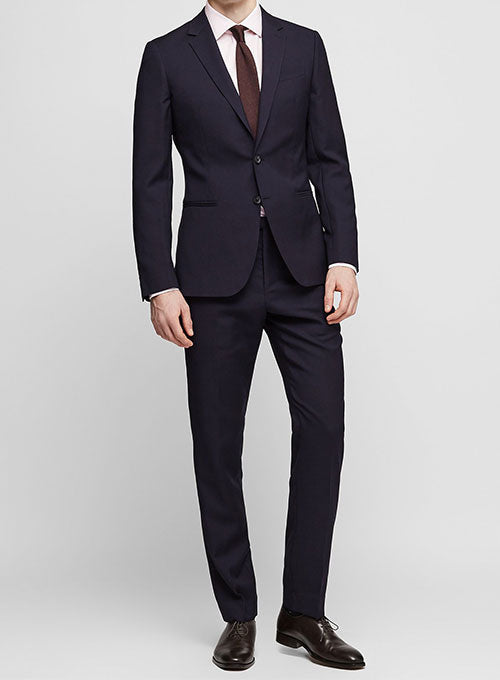Top Tailor Perth: Outstanding Workmanship for Tailored Suits
Top Tailor Perth: Outstanding Workmanship for Tailored Suits
Blog Article
Comprehending the Tailoring Process: From Textile Option to Final Suitable for the Suitable Closet
The tailoring process is a complex interplay of art and science, beginning with the essential choice of fabric choice and finishing in the exact changes of last installations. Each material kind brings one-of-a-kind high qualities that influence not just the aesthetic appeal yet also the garment's longevity and suitability for numerous celebrations.
Importance of Textile Option
Choosing the right fabric is important in the customizing procedure, as it straight influences the comfort, toughness, and general aesthetic of the final garment. The choice of fabric establishes the foundation for the garment's performance, performance, and style. Different textiles possess unique homes, such as breathability, stretch, and weight, which can considerably impact exactly how the garment drapes and fits the body.

A customized item made from a suitable textile not just showcases craftsmanship however additionally raises the user's confidence. As a result, comprehending the subtleties of material choice is critical for any customizing endeavor. It ensures that the final item not just satisfies the aesthetic desires of the client however additionally lines up with useful needs, consequently accomplishing an unified equilibrium between form and feature in the customized closet.
Types of Fabrics and Their Uses
Comprehending the various kinds of textiles offered is essential for making informed choices throughout the customizing procedure. Each material possesses unique characteristics that dictate its suitability for details garments and celebrations.
Its convenience enables it to be tailored right into everything from tee shirts to dresses. Its natural elasticity assists garments keep shape over time.
Silk emanates high-end and is light-weight, making it excellent for eveningwear and delicate blouses; nonetheless, it needs mindful handling because of its fragility. Bed linen, with its textured finish, is a popular selection for warm climates, supplying a crisp and ventilated feeling, but it wrinkles easily, which might influence the garment's look.
Synthetic materials, such as polyester and nylon, offer resilience and resistance to creases, making them ideal for day-to-day wear and energetic apparel. Comprehending these textile kinds and their homes enables better decision-making, guaranteeing that each customized piece not just fits well however likewise lines up with the designated purpose and occasion.
The Tailoring Techniques Clarified
The art of tailoring depends on a selection of strategies that transform fabric into well-fitted garments. Central to this procedure is pattern drafting, where a dressmaker creates templates based on the customer's measurements and wanted design. This preliminary step ensures that the garment will certainly fit the wearer correctly prior to any kind of reducing occurs.
Once patterns are established, cutting methods enter into play. Precision is extremely important as mistakes can lead to misfitting garments. Tailors usually use various reducing approaches, such as single-layer cutting for elaborate styles and multiple-layer cutting for efficiency on conventional patterns.
Basting is an additional important method, allowing dressmakers to briefly stitch fabric items with each other for an initial fitting (tailor perth). This approach supplies the opportunity to assess the drape and general silhouette before final stitching
Seaming techniques, including flat-felled seams and French seams, enhance the garment's sturdiness and aesthetic charm. Tailors likewise use methods such as interfacing and extra padding to supply structure and form to certain areas, like collars and shoulders.
Finally, ending up methods, consisting of hemming and edge ending up, guarantee the garment's long life while supplying a sleek look. browse around these guys With each other, these techniques develop the foundation of efficient tailoring, resulting in charming, tailor-made apparel.

Fitting Changes and Considerations
After the preliminary tailoring methods have actually been used and the garment is created, suitable adjustments come to be paramount to achieving the best fit. These modifications address various facets of the garment, ensuring it contours to the user's body form and improves overall appearance.
The rise of trousers is an additional critical element; it needs to rest pleasantly above the hips without causing discomfort, enabling for ease of movement. Hemming sizes for both trousers and skirts need to mirror the wearer's recommended style while respecting percentages.
In addition, focus must be offered to the rear of the garment, ensuring that there are no unpleasant pulls or excess fabric - tailored suits perth. Each change should be thoroughly considered, as also minor modifications can dramatically impact the general fit and aesthetic of the customized item, inevitably bring about a closet that exudes self-confidence and class
Maintaining Your Tailored Garments
Appropriate maintenance of customized garments is important to protecting their fit and look over time. To make sure durability, regular cleaning is extremely important. Always comply with the care label guidelines, which may recommend completely dry cleansing for fragile textiles or maker washing for more resilient materials. Prevent constant laundering, as this can use down the fabric and modify the garment's form.
Storage space is similarly crucial; use cushioned hangers for coats and layers to maintain shoulder framework, and store pants folded neatly or hung to stop creasing. Safeguard garments from straight sunshine, which can discolor shades and damage fibers.
Additionally, periodic assessments for minor repair services can protect against bigger concerns. Inspect for loosened switches, fraying joints, or indications of moth damage, resolving these problems without delay to preserve the garment's stability.
Lastly, take into consideration seasonal Go Here rotation. Wearing tailored pieces in small amounts allows materials to recoup, extending their life-span. By applying these upkeep methods, you can ensure that your tailored garments stay as immaculate as the day you first used them, improving your excellent closet for years to find.
Conclusion
The customizing procedure, encompassing material selection, knowledgeable strategies, and specific fitting changes, plays a critical role in developing garments that enhance both comfort and design. Each stage contributes to the overall efficiency of the final item, guaranteeing that apparel not just fits well but likewise mirrors private identification. Comprehending the significance of upkeep prolongs the life of tailored garments, solidifying their value in a well-curated wardrobe. A comprehensive strategy to customizing finishes in a refined and confident look.
Report this page